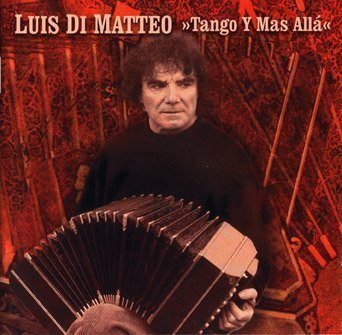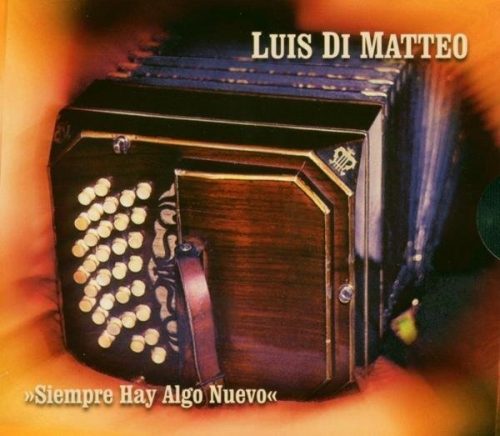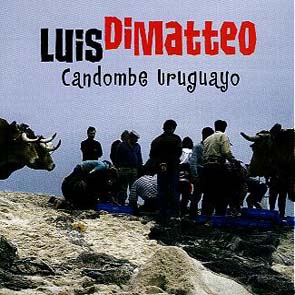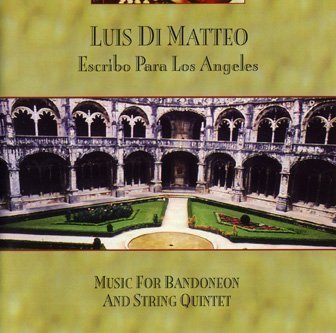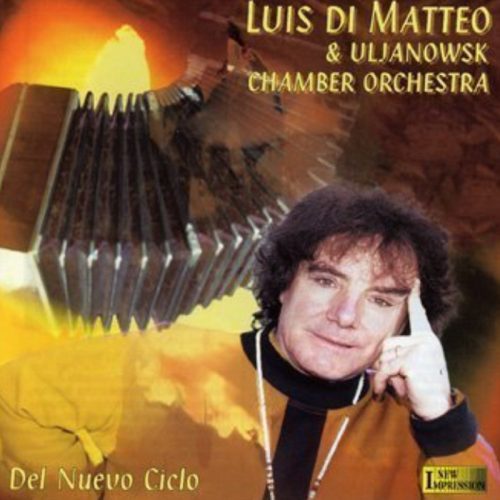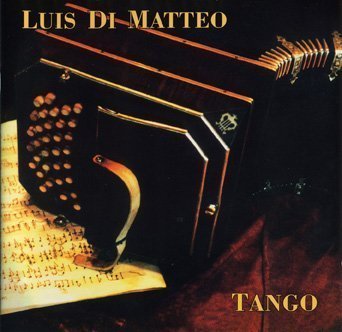Luis Di Matteo is one of the last great bandoneonistas of Rio de la Plata, in addition to being among the most interesting contemporary composers of South American origin. As the Frankfurter Rundschau newspaper noted Luis Di Matteo is “one of the great innovators of the genre (of Tango Nuevo)”.
Luis Di Matteo was born in 1934. He learned to play the bandoneon from his father who he performed with at an early age. Luis Di Matteo finished his musical education at the conservatory in his native city Montevideo, Uruguay. His studies of the bandoneon led him to Buenos Aires in the late 1950s where he met Astor Piazzolla for the first time. In 1962, Luis Di Matteo founded his first ensemble and began recording with his own formation as well as with other musicians.
In 1980, he gave his first performances in Europe where he has been touring regularly. Between 1983 and 1986 he cooperated with the music conservatory of Detmold, Germany. In 1987 he wrote the music for the Swedish film-production “Black Dawn” or “Los Dueños del Silencio”. He took the opportunity of working and recording with a string orchestra for the first time in 1990/91. In the city of Uljanowsk (Lenin’s birthplace), Luis Di Matteo recorded compositions of his own with the chamber soloists of the Uljanowsk National Symphony Orchestra.
As a composer he has worked for various line-ups. Among others, Luis Di Matteo wrote a concert for double bass and string orchestra, duos for cello and violin, or for violin and piano. The last ten years he worked mainly for string quintet, sax quintet and a candombe project with four traditional candombe drummers. A commission with one of the most established classical festivals in Germany– Schleswig Holstein Musikfest, brought him great recognition in the classical world.
Luis Di Matteo’s Style
On the bandoneon, Luis Di Matteo refutes the common misconception that his instrument is applicable solely to Tango. In the words of Berthold Klostermann of Fono Forum: “Luis Di Matteo plays and writes against that image. Like Astor Piazzolla, Dino Saluzzi, Juan José Mosalini or, not least of all, his compatriot René Marino Rivero, he is among the few musicians who have stepped up to liberate the bandoneon from traditional clichés. In his hands it becomes a concert instrument, an instrument which is not only appropriate for sophisticated chamber music, but which lends such music a special character”. In this sense, the Badische Zeitung newspaper noted: “Luis Di Matteo joins Piazzola and Saluzzi to form the triple star of the world’s great interpreters of Tango”.
-
plus Shipping Costs
Tango y mas allá is based on the tango, milonga and candombé musical styles. In addition to the conventional instruments (cello, flute, drums, percussion and bandoneón), the album also contains electronic sounds, e-piano, synthesizer. All these instruments join to form a unified whole. For the first time ever Luis Di Matteo uses the human voice on this CD, which was recorded in 2004. An instrumental-style voice (soprano) features very expressively on the album and gives a special quality to the music. As the critic Ramón Gonzales declared: “Here, the great abilities of the artist are on display in three different areas, as composer/arranger, soloist and conductor”.
-
The Siempre Hay Algo Nuevo is a two-CD set anniversary album. The first, Retrospectivois a musical overview of Luis Di Matteo’s compositional work in the period from 1976 to 1999, featuring characteristic examples from his repertoire. On the second and latest album, Tango y mas allá, based on the tango, milonga and candombé musical styles, electronic sounds, e-piano, synthesizer, and conventional instruments (such as cello, flute, drums, percussion and bandoneón), join to form a unified whole.
-
plus Shipping Costs
This album represents an amazing musical trip by Di Matteo to the roots of tango– the African-based rhythms of Candombe. In Uruguay the descendants of slaves danced to this rousing music with pronounced hip movements. Candombe is played on three drums: the “Piano” (low register / bass), the “Repique” (medium register/tenor) and the “Chico” (high register/alto).
-
plus Shipping Costs
Retrospectivo is a musical overview of Luis Di Matteo’s compositional work in the period from 1976 to 1999, featuring characteristic examples from his repertoire.
-
plus Shipping Costs
The album continues the‘stringed experiments’ of Di Matteo. Here, the artist presents compositions for bandoneon and string quintet, recorded with soloists from the symphonic orchestras in Montevideo.
-
plus Shipping Costs
Del Nuevo Ciclo contains compositions for chamber orchestra by Di Matteo, recorded in Uljanowsk, Russia, with the Uljanowsk Chamber Orchestra.
-
plus Shipping Costs
This is Di Matteo’s first album with solo bandoneon compositions. When listening to this album, the listener cannot help but notice the unusual mastery enabling Luis to make his instrument, often designated as a clumsy one, sound “like a whole orchestra”. All of a sudden, the bandoneon becomes the true voice of tango for us.
-
plus Shipping Costs
This CD comprises the first two albums recorded by Luis Di Matteo in Germany ― Tango Contemporáneo and Le Dernier Tango. Here, the bandoneon, oboe, double bass, piano and drums are enrolled to serve the soothing style of Tango Nuevo. The compositions for Tango Contemporáneo have all originated in Montevideo (Uruguay), whereas Le dernier Tangocontains three works composed by Di Matteo in Detmold (Westphalia Region, Germany).
